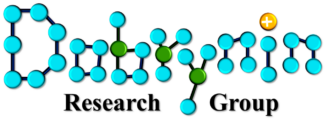Michael Jacobs, Heyi Liang, Erfan Dashtimoghadam, Benjamin J. Morgan, Sergei S. Sheiko, and Andrey V. Dobrynin
While chain branching generally promotes swelling of polymer networks, it also leads to nonlinear modulus increase with network expansion. To understand the effect of branched architecture on swelling, we study comb-like and bottlebrush networks using a combination of theoretical analysis, computer simulations, and experiments. The equilibrium swelling ratio of such networks is shown to be larger than that of conventional linear chain networks as a result of two effects: architectural disentanglement of network strands and amplification of polymer–solvent interactions by side chains. For networks of brush-like strands with poly(dimethylsiloxane) side chains in toluene, we achieve a swelling ratio of Q = 30, which is larger than that of linear chain networks with the same strand length. All of the studied systems, including linear chain, comb, and bottlebrush networks, follow a universal scaling relation, G(Q) ∝ Q–δ, between the deformation-dependent shear modulus G(Q) and swelling ratio Q with scaling exponents δ = 2.6 ± 0.08 (simulations) and δ = 2.6 ± 0.12 (experiments). These values agree with the theoretically predicted exponent δ = 8/3, confirming dominant contribution of three-body interactions to the osmotic pressure which drives network swelling. The established correlations between network strand architecture, nonlinear elastic modulus, and equilibrium swelling ratio provide a general framework for architectural control of swelling capacity and the design of superabsorbent materials.

